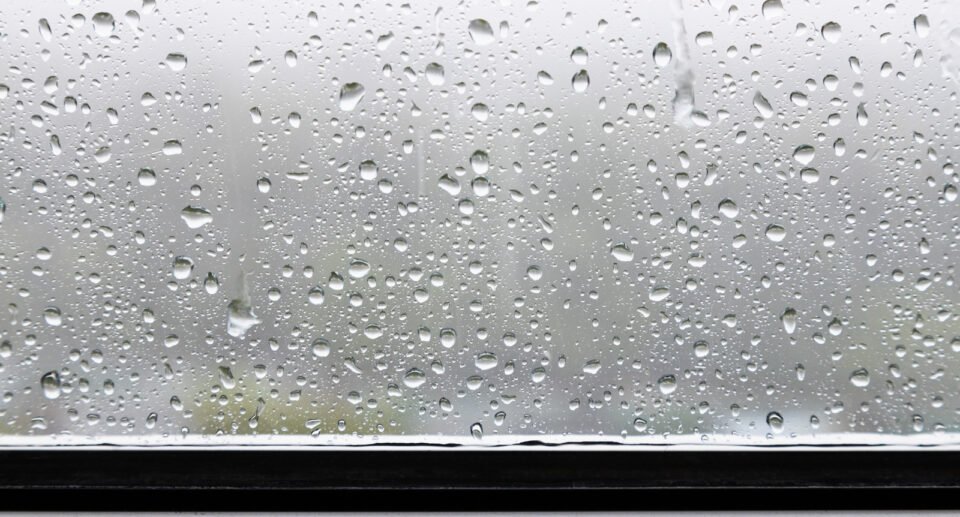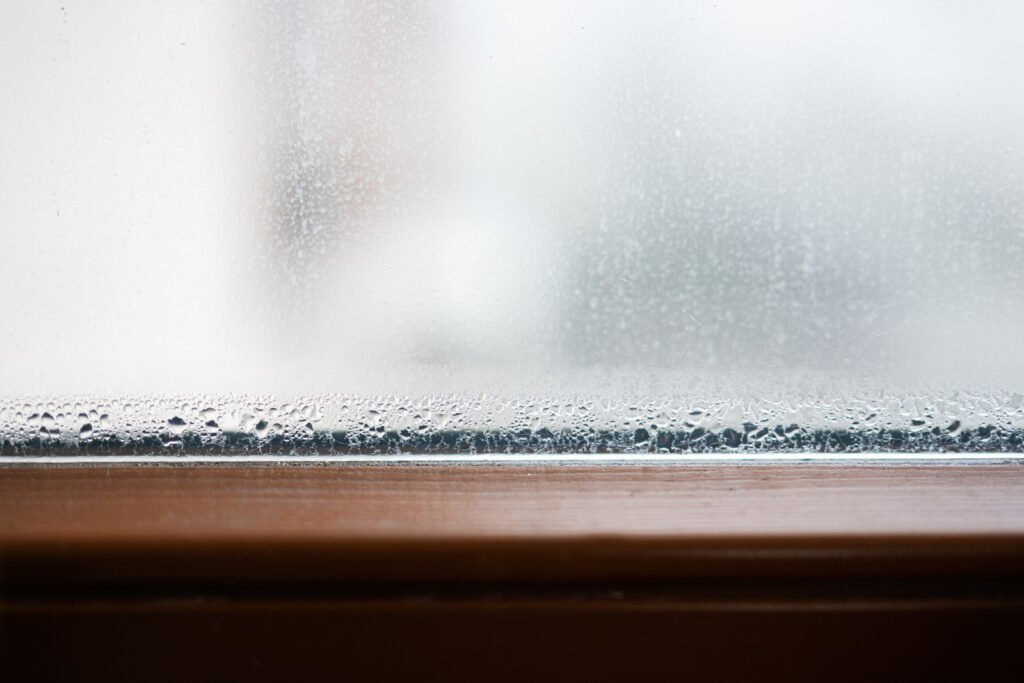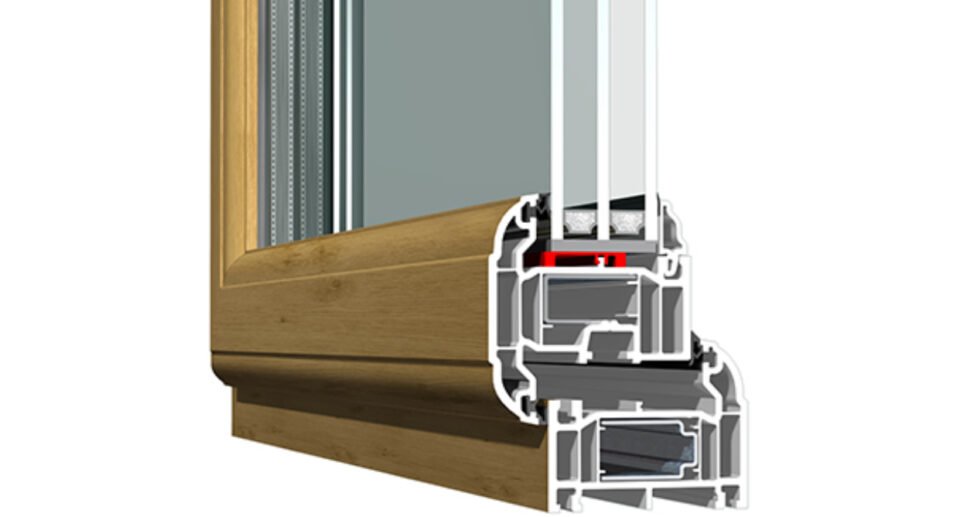How to Remove Moisture from Between Window Panes Using a Hair Dryer

Table of Contents
ToggleMoisture buildup between window panes can be frustrating and unsightly. It can also lead to more significant issues, such as mold growth or damage to the window’s seal and insulation.
Fortunately, there are several ways to remove moisture from between window panes, including using a hair dryer.
Before attempting to remove moisture, it’s essential to understand what causes it.
Moisture buildup in double pane windows is typically caused by a broken seal or damage to the window’s insulation. When this occurs, moisture from the surrounding air can enter the space between the panes, leading to condensation and fogging.
Understanding the cause of the issue can help determine the best method for removing the trapped moisture.
One of the most accessible and cost-effective methods for removing moisture from between window panes is using a hair dryer. With the right technique, a hair dryer can help to evaporate the trapped moisture and restore the window’s clarity.
However, it’s essential to follow the correct steps and precautions to avoid damaging the window or causing injury.
Understanding Moisture in Double Pane Windows

Double pane windows are designed to provide better insulation than single pane windows by trapping a layer of air or insulating gas, such as argon or krypton, between two panes of glass.
However, when moisture accumulates between the panes, it can reduce the insulating properties of the window and cause fogging or mould growth.
In this section, we will discuss the causes of condensation and moisture accumulation in double pane windows and the differences between condensation and seal failure.
Causes of Condensation and Moisture Accumulation
Condensation occurs when warm, humid air comes into contact with a cold surface, such as the glass in a window.
In double pane windows, the space between the panes is filled with air or insulating gas, which slows down heat transfer and reduces the likelihood of condensation.
However, if the seal between the panes is broken, moisture can enter the space and condense on the cold glass surface. This can occur due to a variety of factors, including:
- Temperature differences between the inside and outside of the window
- High humidity levels inside the building
- Poor ventilation or air circulation
- Window damage or wear and tear
Moisture accumulation can also occur due to seal failure, which allows air and moisture to enter the space between the panes. This can happen over time as the window ages or due to damage from extreme weather conditions.
Differences Between Condensation and Seal Failure
It’s important to distinguish between condensation and seal failure, as the solutions for each problem are different.
Condensation is a temporary problem that can be remedied by improving ventilation or reducing humidity levels in the building. On the other hand, seal failure is a permanent problem that requires professional repair or replacement of the window.
Signs of seal failure include:
- Persistent fogging or moisture between the panes
- Mould growth on the window frame or glass
- Visible damage or cracks in the window seal
Preparatory Steps for Moisture Removal
Before starting the process of removing moisture from between window panes with a hair dryer, there are some important preparatory steps that should be taken. These steps will ensure that the process is carried out safely and effectively.
Safety Precautions
Safety should always be the top priority when working with electrical appliances. Here are some safety precautions that should be taken when using a hair dryer for moisture removal:
- Wear protective eyewear to prevent any debris from getting into your eyes.
- Ensure that the hair dryer is in good working condition and has no signs of damage.
- Do not use the hair dryer near water or any wet surfaces.
- Keep the hair dryer away from flammable materials.
- Do not touch the hair dryer with wet hands.
- Unplug the hair dryer when not in use.
Necessary Materials and Tools
To remove moisture from between window panes with a hair dryer, you will need the following materials and tools:
- A hair dryer with a nozzle attachment.
- A soft cloth or towel to wipe down the glass.
- A dehumidifier or fan to prevent condensation from forming again.
- Ventilation to allow the moisture to escape.
It is important to note that if the moisture is between the panes, it indicates a broken seal or faulty window, which may require professional help to fix.
Removing Moisture Using a Hair Dryer
Moisture trapped between window panes can be an annoying problem that can lead to the formation of mold and mildew.
Fortunately, using a hair dryer can be a simple and effective solution to remove moisture from between window panes. Here is a step-by-step guide to help you get started.
Step-by-Step Guide
Assess the Window: The first step in removing moisture between window panes is to assess the severity of the problem. If the moisture is only present in small areas, a hair dryer can be an effective solution. However, if the moisture is widespread, it may be best to consult a professional.
Choose the Right Hair Dryer: When using a hair dryer to remove moisture from between window panes, it is important to choose one with a medium heat setting. This will prevent the glass from cracking due to excessive heat.
Apply Heat: Hold the hair dryer about 6 inches away from the window pane and apply heat to the affected areas. Move the hair dryer in a back-and-forth motion to ensure even heat distribution.
Observe progress: As you work, keep an eye on the moisture inside the window. The warm air from the hair dryer should gradually evaporate the condensation.
Wipe Down the Glass: After the moisture has dissipated, use a soft cloth or towel to wipe away any remaining moisture. This will prevent the formation of mold and mildew.
Optimal Indoor Humidity Maintenance
To prevent moisture from forming between window panes in the future, it is important to maintain optimal indoor humidity levels.
The ideal indoor humidity level is between 30 and 50 percent. Use a dehumidifier to lower humidity levels in your home or office.
Additionally, sealing the window panes and placing a fan in the room can also help prevent moisture buildup.
Additional Methods to Remove Trapped Moisture
Using a Dehumidifier
A dehumidifier is a great option for removing moisture from the air in your home. It works by drawing in the humid air and removing the moisture from it, leaving drier air behind.
This can help to reduce the amount of moisture that is trapped between your window panes.
To use a dehumidifier, simply place it in the room where the affected window is located. Make sure that the room is well-ventilated, as this will help to improve the effectiveness of the dehumidifier.
You may also want to consider using an extractor fan to help remove any excess moisture from the air.
Improving Airflow and Ventilation
Proper ventilation is essential for preventing moisture from becoming trapped between your window panes.
If your home is poorly ventilated, you may want to consider installing additional vents or improving the airflow in your home.
One way to improve airflow is to open windows and doors to allow fresh air to circulate throughout your home.
You may also want to consider installing a window fan or air purifier to help improve ventilation.
Applying Sealants and Weatherstripping
If your windows are not properly sealed, they may be allowing moisture to enter your home and become trapped between the panes.
To prevent this, you may want to consider applying sealants or weatherstripping around your windows.
Sealants and weatherstripping can help to prevent air and moisture from entering your home, which can help to reduce the risk of moisture becoming trapped between your window panes.
This can also help to improve the energy efficiency of your windows, which can help to reduce your energy bills and improve the overall comfort of your home.
Seal and Insulation Restoration
If you have moisture buildup between your double-pane windows, it may be due to damaged seals or insulation. In this section, we will discuss how to identify and repair cracks and gaps in your window seals, as well as how to replace damaged seals.
Identifying and Repairing Cracks and Gaps
The first step in repairing your window seals is to identify any cracks or gaps.
You can do this by inspecting the seals for any visible damage, such as cracks, gaps, or holes. You may also notice a draft coming from your windows, which can indicate that there are cracks or gaps in the seals.
Once you have identified any damage, you can begin to repair it.
One method is to use a sealant to fill in any gaps or cracks. You can find sealants at your local hardware store.
Apply the sealant to the damaged area, and smooth it out with a putty knife. Allow the sealant to dry completely before testing your window for any leaks.
Replacing Damaged Seals
If your window seals are beyond repair, you may need to replace them. To do this, you will need to remove the damaged seal and replace it with a new one.
To remove the damaged seal, you can use a putty knife or a scraper to pry it out of the window frame. Be careful not to damage the frame or the glass.
Once the old seal is removed, clean the window frame and glass with a mild detergent and water.
Next, measure the length of the window seal you need to replace. You can purchase replacement seals at your local hardware store.
Cut the new seal to the appropriate length, and insert it into the window frame. Use a putty knife or scraper to press the seal into place.
Finally, test your window for any leaks by spraying it with water. If you notice any leaks, you may need to apply additional sealant to the damaged area.
Professional Repair Options
When to Seek Professional Help
While using a hair dryer to remove moisture from between window panes is a cost-effective and simple DIY solution, there may be times when professional help is necessary.
If the moisture buildup is severe or if there is damage to the window panes, it is best to seek the assistance of a specialist.
Professionals have the necessary tools and expertise to assess the severity of the problem and provide an appropriate solution.
They can also identify any underlying issues that may be causing the moisture buildup and prevent future occurrences.
Cost-Effective Professional Services
Professional repair services can be an affordable option for those who are unable to fix the problem themselves or do not have the necessary tools.
The cost of professional repair services will depend on the severity of the problem, the type of window panes, and the location of the service provider.
It is important to research and compare prices from different service providers to ensure that you are getting the best value for your money.
Look for a professional service that offers a guarantee or warranty on their work to ensure that you are protected in case the problem recurs.
Preventing Future Moisture Issues
To prevent future moisture issues between window panes, regular maintenance and cleaning are essential. Upgrading to energy-efficient window options can also help reduce the likelihood of condensation forming.
Regular Maintenance and Cleaning
Regular maintenance and cleaning of windows can help prevent condensation from forming between the panes. This involves checking the seals around the windows for any cracks or gaps that can allow moisture to seep into the space between the panes.
Any cracks or gaps should be repaired promptly to prevent moisture from entering.
It is also important to keep the windows clean to prevent the build-up of dirt and grime that can trap moisture between the panes. Using a soft cloth or sponge and a non-abrasive cleaner such as vinegar solution or dish soap mixed with water can help keep the windows clean and prevent moisture from accumulating.
Upgrading to Energy-Efficient Window Options
Upgrading to energy-efficient window options can also help prevent moisture from forming between the panes. Energy-efficient windows are designed to reduce heat transfer, which can help prevent condensation from forming on the inside of the window.
Double-glazed or triple-glazed windows are good options for energy-efficient windows. These windows have two or three panes of glass with a layer of air or gas between them, which helps to reduce heat transfer and prevent condensation from forming.
Conclusion
In conclusion, using a hair dryer to remove moisture from between window panes is a simple and effective solution to this common problem. By applying heat to the affected area, the condensation can be evaporated and wiped away with ease.
While a hair dryer can be a useful tool in removing moisture from between window panes, it is not a permanent solution. It is recommended to address the root cause of the condensation, such as poor insulation or ventilation, to prevent the issue from recurring.
Additionally, it is important to exercise caution when using a hair dryer near windows, as excessive heat can cause damage to the glass or frame. It is recommended to use the hair dryer on a low or medium heat setting and to keep it moving to avoid overheating any one area.
Frequently Asked Questions
There are several methods to remove condensation from double glazed windows. One of the most effective methods is to use a hair dryer. Other methods include using a dehumidifier, applying a silica gel pack, or using a moisture absorber.
Yes, a hairdryer can effectively eliminate moisture trapped between window panes. By applying heat to the edges or cracks in the frame, the warm air from the hair dryer should gradually evaporate the condensation. However, remember that this is only a temporary fix and you need to address the underlying cause of the moisture.
Yes, it is possible to repair windows that have moisture between the panes. One option is to replace the entire window, but this can be costly. Another option is to have a professional repair the seal or replace the desiccant within the window. It is important to address the issue as soon as possible to prevent further damage to the window.
Leaving condensation between window panes unaddressed can lead to several issues. The moisture can cause damage to the window frame, including rot and mould growth. It can also affect the insulation properties of the window, leading to increased energy costs. In addition, the appearance of the window can be affected, giving it a cloudy or foggy appearance.
Unfortunately, there is no way to conceal the appearance of a blown window caused by moisture. The only solution is to have the window repaired or replaced.
The costs associated with resolving condensation between window panes can vary. This depends on the severity of the issue and the method of repair. Replacing the entire window can cost several hundred pounds. Meanwhile, having a professional repair the seal or replace the desiccant can be less expensive. It is important to obtain quotes from several professionals before making a decision.

Hello, I’m Keith Jones. I’m the author and head of content here of door and window guide. I’ve been in the window and door industry for over 10 years in the UK and North America. I’ve had quite a few roles during my career mainly in Worldwide sales. I’m now semi retired so I thought I’d put my knowledge to good use educating people about all they might need to know about door and window related topics.






